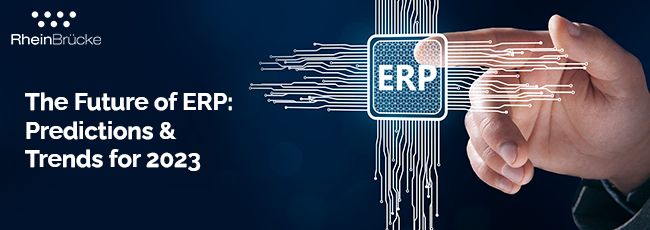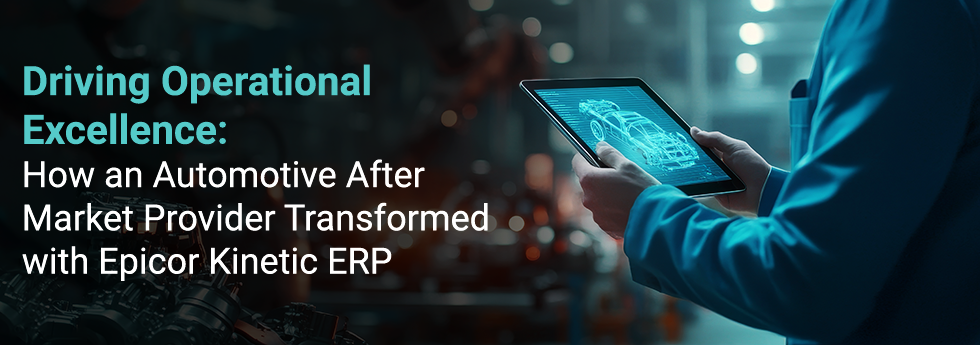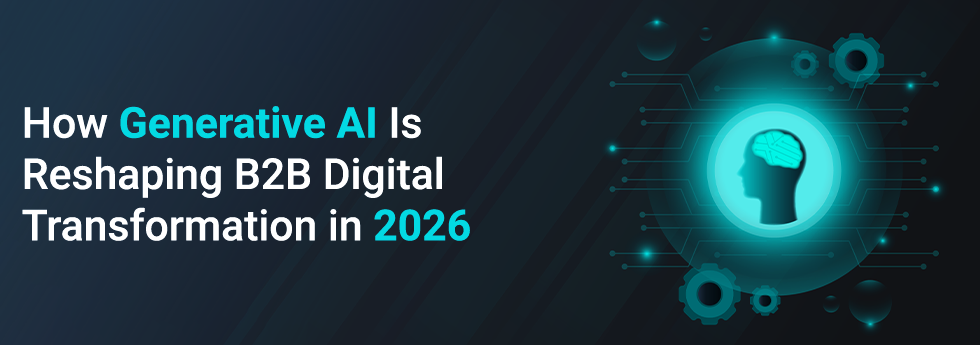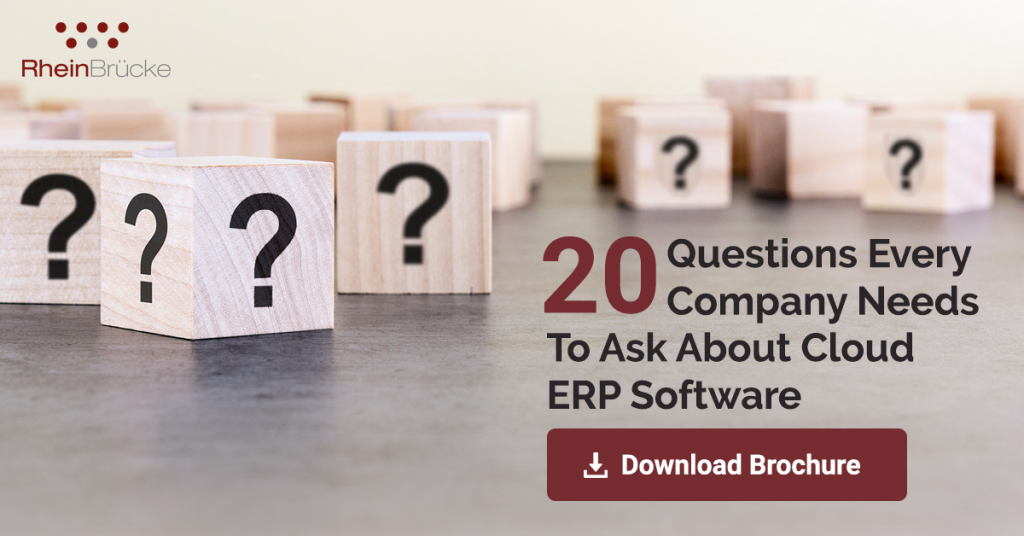
Excerpt & Introduction
Significant technological advances in the last few years have transformed how business enterprises use ERP. Today’s organisations use ERP to transform their business digitally, bring innovation, enhance productivity and improve customer experiences. Let us look at the Top 9 trends and predictions in ERP for 2023 and why they are essential.
- Shift towards Cloud ERP
- Move towards Industry Specific ERPs
- Adoption of Industry 4.0
- Embracing the Industrial Internet of Things (IIoT)
- Plug & Play ERP Integration
- Enabling Omni-Channel Customer Experiences
- Integrated Supply Chain & Lean Manufacturing
- Simulation & Advanced Analytics
- Distributed ERP Architecture & Multi-Cloud Fabrics
1. Shift Towards Cloud ERP

One of the most significant shifts is that small and big enterprises are moving towards Cloud ERP instead of On-Premise ERP. IDC has forecasted that the Public Cloud ERP market could reach $73 billion by 2026 from 36 billion in 2021 at an annual growth of 15%. The reasons for this shift are many and are as follows:
- Ongoing Op-Ex model instead of significant capital expenditure every 3-4 years.
- Functionally and technically updated business solutions.
- Real-time access to the software anywhere.
- Enhanced Security against ransomware & other cyber threats.
- Ease of maintenance and improved integrations.
- Ability to use the compute and AI/ML capability of the ERP data centres that are highly scalable and support these technologies.

2. Move Towards Industry Specific ERP

According to Epicor’s Industry Insights Report of 2022, 95% of businesses think their ERP Solution should be specific to their business or industry.
Customers no longer accept “One Mould Fits All” solutions or solutions lacking industry capability or expertise. In addition, they find such solutions or service providers limiting their business continuity and future growth potential.
According to the survey, respondents feel they need a technology partner and a solution provider with deep industry experience, who understands their specific needs, offers customer-driven products and innovation and can guide them towards their ideal solution.
That is why Top ERP Solution Providers like SAP, Epicor, Microsoft & Oracle are investing significantly in their ERP solutions and partner ecosystems to make them more industry-specific. Industry-specific ERP systems are designed exclusively with industrial use cases in mind, require little to no customisation, are faster to implement, and are built with industry expertise and best practices. These solutions are prevalent in Manufacturing, Distribution, Interior Design, Construction and EPC industries.
3. Adoption of Industry 4.0
Industry 4.0 is the Fourth Industrial Revolution, 4IR or the digital revolution. Industry 4.0 uses the following technologies to enhance the value chain of a business enterprise:
- Connectivity, Data, and Computational power: cloud, blockchain, sensors
- Analytics and Intelligence: advanced analytics, machine learning, & AI
- Human–Machine interaction: virtual reality (VR) and augmented reality (AR), robotics and automation, autonomous guided vehicles
With many of these technologies entering the mainstream and becoming more affordable, business enterprises across industries are using them to transform their business value chain, building a competitive advantage and improving customer experiences.
Deloitte and Word Economic Forum have launched the Global Lighthouse Network – which examines the 4IR adoption across industries and provides a guiding light to enterprises on adopting 4IR. According to another survey by Deloitte, 94% of executives surveyed by Deloitte concur that success over the next five years depends on AI.
As a result, ERPs significantly invest in adapting their solutions to Industry 4.0 across various business functions. They are bringing different use cases for businesses to adopt to Industry 4.0 as listed below.

4. Embracing the Industrial Internet of Things (IIoT)
The Industrial Internet of Things—also called the Industrial Internet—is the connection of machines over a network. It’s also a considerable part of Industry 4.0. It connects mission-critical machines and devices to how you run your business.
Data collection is the most significant benefit of IIoT. This technology gives business owners a crazy amount of accurate, real-time data to make smarter, faster decisions.
Industrial IoT is gaining rapid adoption with potential use cases across multiple industries. According to Markets & Markets, the global IIoT market can reach 106 billion USD by 2026 with an annual growth rate of 7%.
ERPs are building capability combining IIoT with the power of Cloud Computing, Artificial Intelligence, Machine Learning and Advanced Analytics to make factories and distribution centres smarter and more intelligent.
ERPs with IIoT would offer the following capabilities to business enterprises:

- Smart Products – Better insights into your products’ performance and use in the field.
- Smart Assets – Asset Performance Management capabilities monitor production and maintenance asset conditions.
- Smart Supply Chain – Transforms the supply chain into an interconnected system that can respond in new, dynamic ways.
- Smart Infrastructure – Capture things like environmental conditions to deliver new forms of digital operational intelligence.
- Smart Transportation – Track, monitor, and analyse assets that move from trucks to shipping containers.
- Smart People – Empower people by giving them real-time information collected from sensors and machines.
5. Plug-and-Play ERP integration
Easy integration via standard APIs and the availability of pre-built integrations with popular cloud solutions will be the emerging trend in Cloud ERP. In fact, According to Industrial Insights Report, 30% of customers are evaluating a change to their ERP solutions due to limiting integration capabilities.
In the future, customers expect deeper, bi-directional and self-serviced integration features from their ERP solutions. Therefore, this would be one of the critical evaluation criteria for selecting a suitable ERP.
Anticipating this trend, top ERP solution providers, including Epicor, are providing multiple ways by which they can address the ERP integration needs of the customers.
- They offer a central business integration platform that provides secure workflow orchestrations within ERP and Non-ERP applications. As a result, users can automate tasks and streamline processes to promote efficiency across the supply and demand chains.
- They also offer an Integration Cloud Platform that provides readymade integrations with numerous endpoints, including popular applications, databases, data formats, SOA Platforms, and other data formats.
6. Enabling Omni-Channel Customer Experiences
Today, B2C and B2B businesses have become omnichannel businesses. As a result, B2B and B2C customers require multiple channels, including traditional brick & mortar and digital channels through which they can interact with business enterprises for their sales and support needs.
According to McKinsey, 94% of respondents view today’s B2B omnichannel reality—in which customers buy face-to-face, remotely, and online. In addition, according to Google, 59% of B2C shoppers surveyed say that being able to shop on mobile is essential when deciding which brand or retailer to buy from. As a result, businesses need to adopt an omnichannel reality to provide seamless customer experiences.
Leading ERP solutions are adapting to this reality by offering multiple digital channels through which business enterprises can offer seamless and engaging customer experiences. For example, ERPs are enhancing their CRM solution to a full-fledged customer experience platform which integrates and interacts with customers across multiple digital touchpoints. They also include E-Commerce, Support Portals, and Retail POS solutions to their offerings stack with deep integrations with other ERP modules to enable omnichannel marketing, sales and support operations.
7. Integrated Supply Chain & Lean Manufacturing
Lean manufacturing is a method of production based on maximising productivity while simultaneously minimising waste within production operations. According to the lean principle, anything that doesn’t add value the customers are willing to pay for is termed waste. Its coverage can include ineffective inventories, underused talent, or wasteful processes, to name a few.
Lean manufacturing also works on the principle of a pull system that requires enterprises to produce based on the demand for the product. Implementing lean manufacturing requires dynamic demand forecasting and deep levels of integrations across the demand and supply chain partners.
Top and Leading ERPs are embracing this and are making significant advancements in offering lean manufacturing capabilities. In addition, they are enhancing their solutions to provide deep EDI integration to their customers and vendors, providing lean manufacturing and Kanban capabilities, Make-to-Order capabilities, Configure-to-Order capabilities, Dynamic MRP and capacity planning capabilities, advanced MES and Quality Assurance capabilities.
8. Simulation and Advanced Analytics
According to Deloitte Tech Trends 2023, with an abundance of data and advanced AI & ML capabilities, business information from systems is transitioning from descriptive analytics (reports and dashboards) to predictive analytics (suggestions based on simulations), cognitive automation (ex. chatGPT) and exponential intelligence. Exponential Intelligence is the ability to provide data interpretations that goes beyond human capacity using AI, ML, Deep Learning and Big Data.
ERPs have been making significant advances in this area. Top ERPs today have transitioned to providing predictive analytics from data representation and descriptive analytics (Reports & Dashboards). Today ERPs offer predictive analytics across multiple use cases, such as demand forecasting, supply planning, predictive maintenance analytics, production and machine simulations using digital-twin technologies, and cash-flow forecasting.
With abundant data availability, advances in managing big data, and deep computing capabilities, ERP will offer more use cases of predictive analytics and work towards exponential intelligence with more data points from internal and external sources to make their predictions more accurate. In addition, ERPs will also be extensively working towards cognitive automation that will provide human-like responses to business queries.
9. Distributed ERP Architectures
From relying on One Core ERP solution to address all their needs across business functions, geographies, companies and ecosystems, business enterprises will continue to move towards decentralised architectures with deep integrations and manageability. Top ERP solution providers are making significant investments in this area. They are developing Two-Tier ERP models and Multi-Cloud Manageability Fabrics to manage distributed business applications landscape.
The 2-Tier ERP Approach uses two different ERP systems for its distinct business divisions. This ERP approach is based on the realisation that a two-tier design is economical, implements quickly, and is less expensive than launching new, all-encompassing ERP software for each business unit.
A typical layout of a two-tier ERP strategy within a business organisation is shown in the image below.
While the company’s headquarters and production locations can continue to utilise the traditional Tier 1 ERP for the complex features, the smaller organisational units (such as subsidiaries, international branches, and start-ups) gain from an ERP design that is more user-friendly and tailored to their needs.
Conclusion
Every year, modern ERP systems advance and transform how we do business. However, it is critical to have the right partner and solution to assist your efforts as you start to think ahead and make plans for 2023.
Contact us to learn more about Epicor ERP on RheinBrücke Cloud and to work with the largest Epicor ERP implementation partner in EMEA. We can provide you with a team of experts dedicated to delivering ERP implementation best practices from selection to end-user training and implementation.




